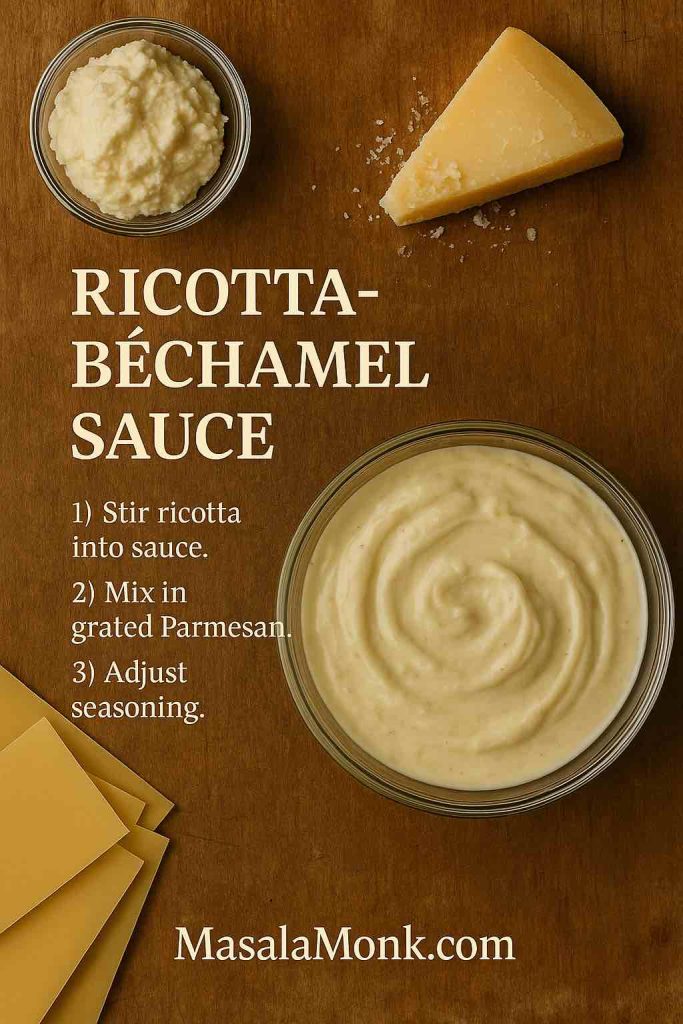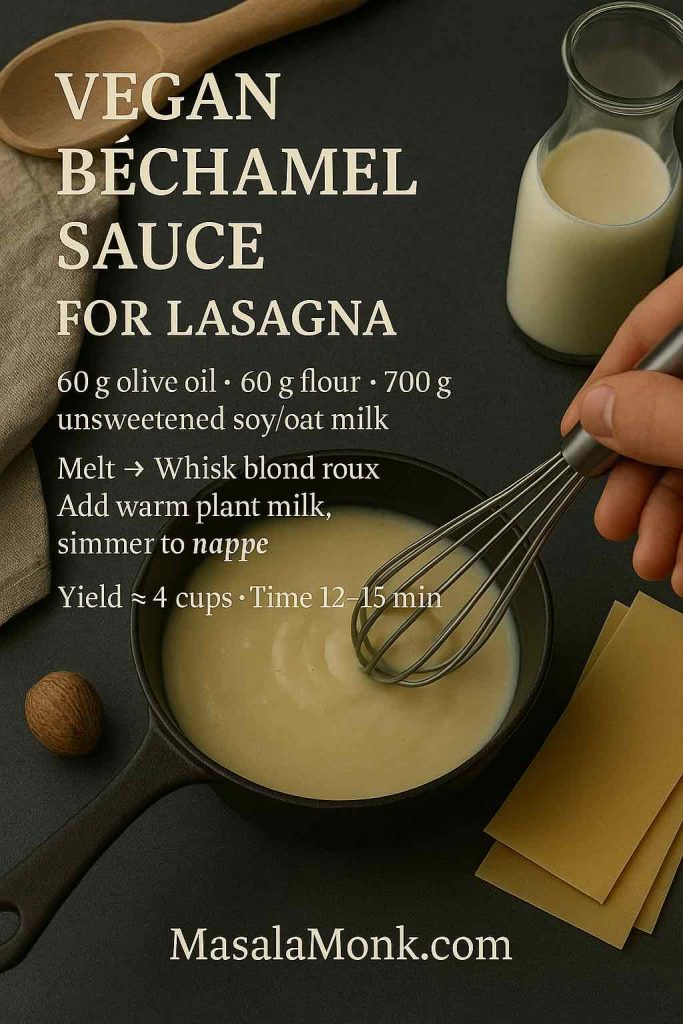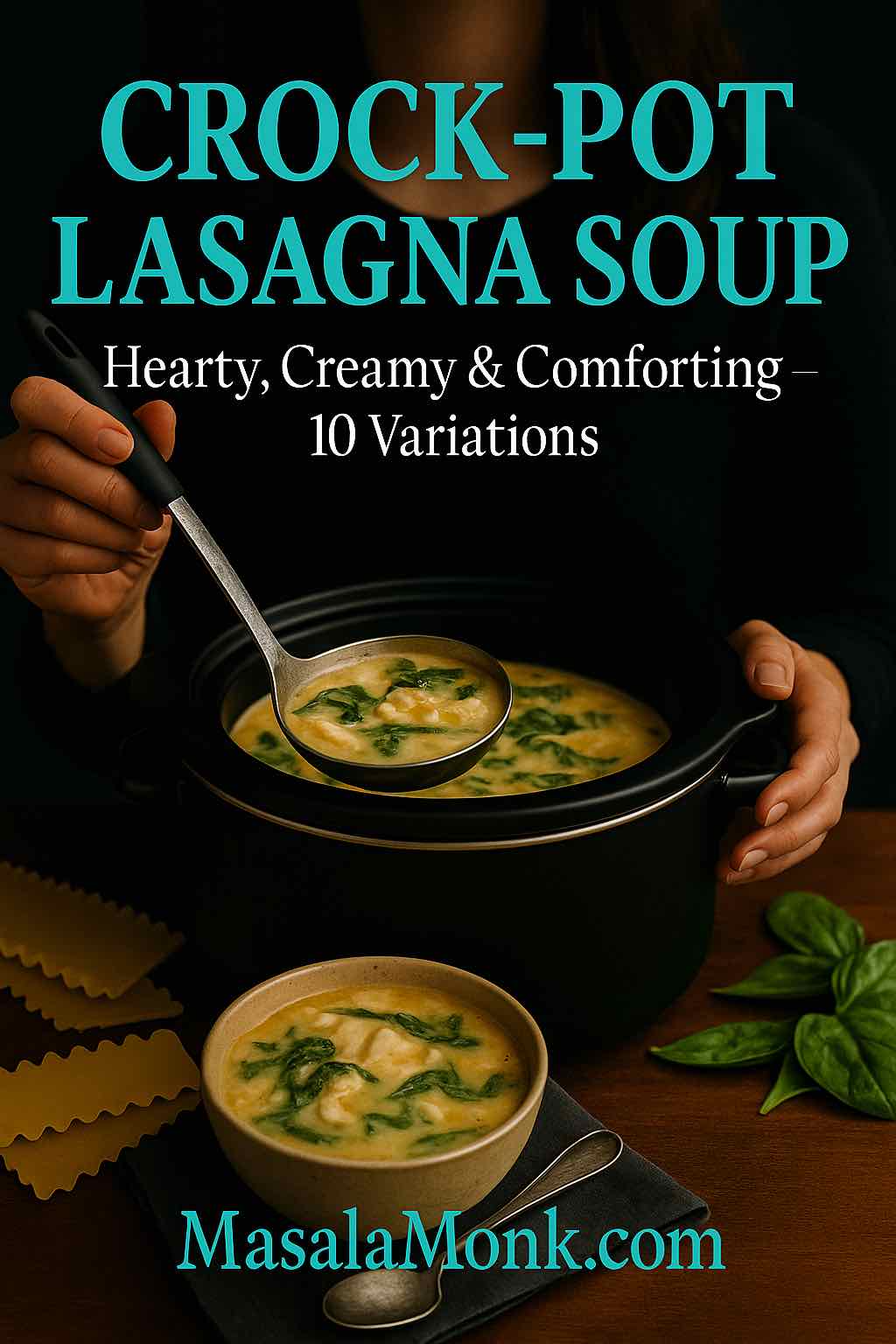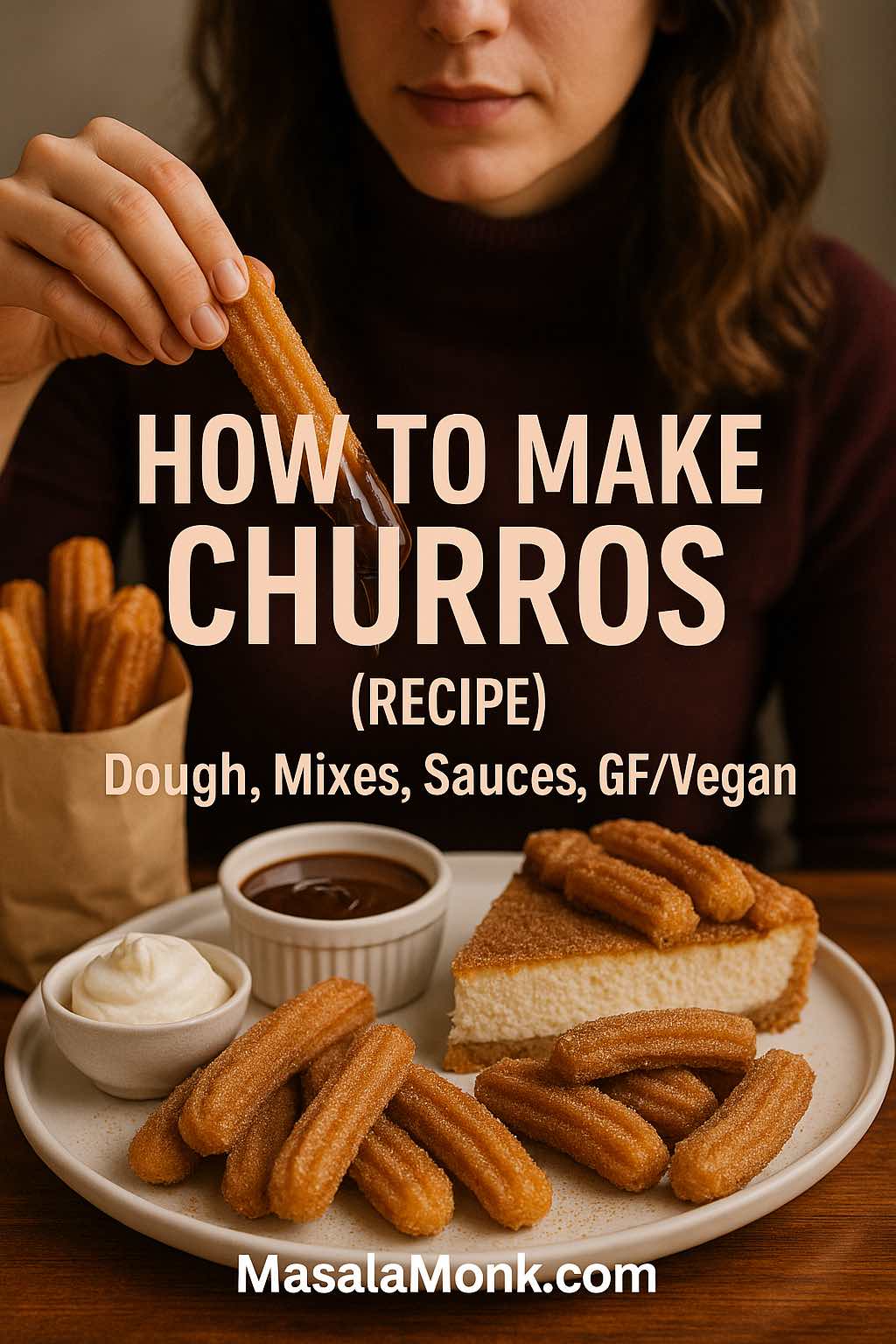
Some shots ride a wave of hype and vanish; others stick because they’re simple, consistent, and fun. The green tea shot with Jameson is very much the latter. It looks playful, smells like citrus and stone fruit, and goes down with a soft, tea-like whisper even though—surprise—it contains no tea at all. Instead, you get Irish whiskey’s gentle grain notes, peach schnapps’ sunny sweetness, and a crisp sweet-and-sour finish lifted by the smallest splash of lemon-lime soda. Made well, it’s cold, foamy at the rim, and perfectly balanced. Below, you’ll find the polished build, why these proportions work, how to make a fresher sour mix, and several variations (including Jameson Orange and a lighter vodka “white tea” version). To help you explore further, you’ll also see natural anchor links to internal technique pieces and external reference recipes from respected cocktail publishers and brands.
The classic green tea shot with Jameson (2 shots, 2 minutes)
You’ll need
- ½ oz (15 ml) Jameson Irish Whiskey
- ½ oz (15 ml) peach schnapps
- ½ oz (15 ml) sour mix
- A small splash of lemon-lime soda (≈¼ oz / 7–10 ml total after shaking)
- Ice

How to make it
- Add Jameson, peach schnapps, and sour mix to an ice-filled shaker.
- Shake hard for 8–10 seconds.
- Fine-strain into two chilled shot glasses.
- Finish with a tiny splash of lemon-lime soda. Serve immediately.
If you like confirming ratios and steps against trusted sources, compare the build with the clear, home-bar walkthrough on Liquor.com’s Green Tea Shot, the milliliter-forward instruction at Difford’s Guide, and the brand’s own parts-based spec on Jameson’s recipe page. For a bit of cultural context—why it spread and who orders it—dip into VinePair’s take.
Why these equal parts work
At heart, this is a three-way conversation between grainy, honey-tinged Irish whiskey; ripe, candy-peach schnapps; and bright, citric sour mix. Equal portions mean the sweetness from the schnapps never overwhelms the citrus, and the whiskey’s soft character still peeks through. The brief, decisive shake does two things at once: it chills and it aerates. That’s why, even before the soda, the surface shows a fragile foam—as if you’d just poured milky green tea. Then the soda splash amplifies aroma and adds the slightest sparkle, turning the texture silky.
If you’re dialling in your shake and strain, you’ll find practical, bar-tested guidance in MasalaMonk’s technique-forward posts like the Daiquiri recipe (classic, strawberry & frozen) and the citrus-balancing notes inside the Lemon Drop Martini guide. Different drinks, same fundamentals: fresh juice, clean measures, committed shake.
Fresher flavor without fuss: DIY sour mix recipe
Bottle mixes are consistent, yet fresh citrus always brings a livelier snap. Make a small batch and you’re set for a week.
- 1 cup (240 ml) fresh lemon juice
- 1 cup (240 ml) fresh lime juice
- 1½ cups (300 g) simple syrup (1:1 by weight or volume)
Whisk, bottle, and refrigerate for up to 7 days. Because sour mix is the drink’s backbone, brighter mix means greener color, tighter foam, and cleaner finish. Want a little more citrus craft? The quick long-drink ideas in Vodka with Lemon show how to nudge sweet-sour toward your palate without losing balance.
Ingredient choices that actually matter
Irish whiskey: Jameson as an alcohol, is soft, slightly floral, and blends without fighting the peach. Any good Irish will do, but if you want to explore riffs from the same family, poke around Jameson’s cocktail hub—it’s a fast way to sense where their flavor works best.
Peach schnapps: This is the dessert-forward note. If you prefer a leaner profile, choose a schnapps that’s less confected or dial it back by a barspoon. Alternatively, offset sweetness by increasing the citrus slightly.
Sour mix: Fresh wins on aroma and color. If you’re pouring for a crowd and need consistency, bottled sour mix is fine—just consider sharpening it with a squeeze of lemon per shaker.
Soda: Use just a whisper. Too much turns the shot into a spritzer and mutes the tea-like illusion.
Also Read: What to Mix with Jim Beam: Best Mixers & Easy Cocktails
Variations for Different Moods (Exact Specs, Real Flavor Payoffs)
The base spec is robust, which means it tolerates swaps without collapsing. Below are deliberate riffs with measurements in both ounces and milliliters, clear flavor notes, and straightforward “when to pour” cues—so you can match the drink to the moment instead of forcing the moment to the drink.
Jameson Orange Tea Shot Recipe (zest-first, brighter nose)
Substitute Jameson Orange for classic Jameson, keep schnapps and sour mix the same, and land an even brighter nose with orange-peel vibes. The result is zestier, with the peach riding as a secondary note. If you enjoy oranges-on-oranges builds, peek at the brand’s citrusy long drink like Jameson Orange Burst to see how they frame sweetness and zest in longer formats; then return to the shot and keep the soda splash tiny so the orange oil doesn’t get lost.
Why make it: When you want everything you love about a green tea shot with Jameson—plus orange peel aromatics that jump out of the glass.
You’ll need (2 shots)
- ½ oz (15 ml) Jameson Orange
- ½ oz (15 ml) peach schnapps
- ½ oz (15 ml) sour mix
- Tiny splash lemon-lime soda
- Ice

Method
- Shake whiskey, schnapps, and sour mix hard with ice for 8–10 seconds.
- Fine-strain into two chilled shot glasses.
- Dot each with a restrained soda splash.
Flavor & feel: The orange infusion brightens the top notes, nudging peach to the mid-palate. Citrus reads clearer, sweetness feels round rather than sticky, and the finish stays tea-like.
When to pour it: First round for citrus lovers; last round when palates are a bit dulled and need aromatic lift.
Make it yours: If the bottle leans sweet for you, shave the schnapps to ⅓ oz (10 ml) and bump sour mix to ⅔ oz (20 ml). For longer, citrus-zesty drinks, skim how the brand frames orange in highballs on Jameson’s cocktail hub, then translate that brightness back into your shot spec with a lighter soda touch.
Also Read: Whiskey and Warmth: 5 Cinnamon-Spiced Iced Tea Cocktails to Get You through Wednesday
White Tea Shot Recipe (vodka version, feather-light and crisp)
Despite the name, no tea here either—just a lighter spirit in the same pattern: ½ oz vodka, ½ oz peach schnapps, ½ oz sour mix, and a soda whisper. Guests who usually avoid whiskey will appreciate this softer version. If you’re on a citrus kick, the lemony long-drink ideas in Vodka with Lemon cross-train your palate for dialing sweetness with precision.
Why make it: Guests want the vibe without whiskey; you want something ultra-approachable that still tastes like a cocktail.
You’ll need (2 shots)
- ½ oz (15 ml) vodka for alcohol
- ½ oz (15 ml) peach schnapps
- ½ oz (15 ml) sour mix
- Whisper of lemon-lime soda
- Ice

Method—same as the classic: shake, fine-strain, soda whisper.
Flavor & feel: Cleaner nose, softer mid-palate. Without grain notes, peach and citrus do the talking; the soda keeps it lively.
When to pour it: Big mixed-crowd parties; first taste for someone who insists they’re “not a whiskey person.”
Make it yours: Use a neutral, well-filtered vodka. If your sour mix is super fresh, the drink will taste drier and more polished. For more citrus nuance, the bright balancing ideas in MasalaMonk’s Vodka with Lemon transfer perfectly.
Tequila Green Tea Shot Recipe (herbal, slightly peppery)
Blanco tequila brings gently herbal, peppery energy. Keep your equal parts (tequila, peach schnapps, sour mix) and still finish with that light soda topper. The peach brightens the agave; the citrus keeps it honest.
Why make it: You love agave’s snap and want a slightly drier, greener energy without losing the peach-citrus handshake.
You’ll need (2 shots)
- ½ oz (15 ml) blanco tequila
- ½ oz (15 ml) peach schnapps
- ½ oz (15 ml) sour mix
- Tiny splash lemon-lime soda
- Ice

Method
- Shake all but soda with ice; fine-strain.
- Add a micro-splash of soda; serve.
Flavor & feel: Citrus frames the tequila’s herbal top notes; peach smooths the edges. The finish is brisk, not hot.
When to pour it: Taco night; summer porch sessions; anytime your crowd is already in a margarita mindset.
Make it yours: If your schnapps is very sweet, cut it by a barspoon and give that space to tequila. Alternatively, keep equal parts but add three drops of saline to tighten the line between sweet and sour.
Also Read: 10 Best Espresso Martini Recipe Variations (Bar-Tested)
“Green Tea Shot with Jameson” as a Full Drink (Recipe of highball you’ll keep making)
Sometimes you want more than a sip. In a tall glass with ice, combine 1½ oz Jameson, 1 oz peach schnapps, and 1 oz sour mix. Top with 3–4 oz lemon-lime soda and give it a quick stir. It reads like a riff on a citrus-peach spritz with whiskey backbone—refreshing without feeling sticky. If you’d rather build long drinks with more nuance, skim MasalaMonk’s highball-friendly framework inside Coconut Water Cocktails; the sequencing—light muddle, shake, top—transfers neatly to soda-lifted whiskey coolers.
Why make it: Sometimes everyone wants a sipper, not a quick hit—but with the same peachy-citrus profile.
You’ll need (one tall drink)
- 1½ oz (45 ml) Jameson
- 1 oz (30 ml) peach schnapps
- 1 oz (30 ml) sour mix
- 3–4 oz (90–120 ml) lemon-lime soda
- Ice + tall glass

Method
- Build whiskey, schnapps, and sour mix over ice.
- Top with soda; gentle single turn with a barspoon.
Flavor & feel: Refreshing, softly sweet, zesty on the nose. Think “peachy whiskey spritz” more than “shot stretched with bubbles.”
When to pour it: Warm evenings; second round for folks who loved the shot but want to linger.
Make it yours: Swap the lemon-lime soda for chilled club soda if you prefer a drier profile; backfill with a ¼ oz (7 ml) of simple syrup if it goes too lean. For broader highball structure—how to stack, stir, and top without knocking out bubbles—MasalaMonk’s Coconut Water Cocktails gives a tidy roadmap that translates beautifully.
Also Read: Crock Pot Lasagna Soup (Easy Base + Cozy Slow-Cooker Recipes)
Peach tea shot (Recipe with actual brewed tea)
Your friends might eventually ask for real tea flavor. For a soft, porch-sipper profile, shake ½ oz Jameson, ½ oz peach schnapps, ½ oz strong black tea, and ¼ oz lemon juice; strain and skip the soda. The color leans amber, the texture dries out a touch, and the aroma feels more like summer iced tea. If that direction appeals, you’ll love the whiskey-plus-tea combinations in MasalaMonk’s cinnamon-spiced iced tea cocktails and the sparkling bergamot tones in Earl Grey Elegance.
Why make it: Someone inevitably asks for real tea. This one answers kindly and keeps the flavor honest.
You’ll need (2 shots)
- ½ oz (15 ml) Jameson
- ½ oz (15 ml) peach schnapps
- ½ oz (15 ml) strong black tea, cooled
- ¼ oz (7 ml) fresh lemon juice (optional, for snap)
- Ice

Method
- Shake all four ingredients with ice; fine-strain into two shots.
- Skip the soda—tea supplies structure.
Flavor & feel: More iced-tea than candy. Color turns amber-gold; finish dries out nicely.
When to pour it: Afternoon gatherings; tea-loving crowds; anytime soda feels too bubbly.
Make it yours: Steep tea a touch stronger than you’d drink; sweetness will soften in the shaker. If that world appeals, MasalaMonk’s tea-first series—like cinnamon-spiced iced tea cocktails and Earl Grey Elegance—maps out plenty of variations for bigger batches.
Turn the party peach-forward
Leaning into peach as a theme? Fold your shot service into a sweet-stone-fruit menu. For easy bridges—spritzes, long drinks, and fun desserts—MasalaMonk’s Crown Royal Peach roundups show how to steer peach toward bubbles, spice, and summer fruit in a way that still feels grown-up.
Green Tea Martini Recipe with Jameson (From Shot to Coupe)
You’ll need (1 cocktail)
- 1½ oz (45 ml) Jameson
- ¾ oz (22 ml) peach schnapps
- ¾ oz (22 ml) sour mix
- Lemon twist (optional)

Method Shake hard with ice; fine-strain into a chilled coupe; express lemon over the top.
Flavor & feel Colder, silkier, a shade drier; stemware concentrates aroma and slows the sip.
When to pour Date nights and small groups who prefer cocktails to quick rounds.
Also Read: Cottage Cheese Lasagna Recipe | Chicken, Spinach, & Ricotta
How to make Green Tea Jello Shots (Make-Ahead, Party-Tray Friendly)
You’ll need (20–24 minis)
- 1 cup boiling water
- 1 packet (3 oz / 85 g) lemon-lime gelatin
- ¾ cup (180 ml) Jameson
- ¾ cup (180 ml) peach schnapps
- ¼ cup (60 ml) sour mix

Method Dissolve gelatin; stir in spirits and sour; portion; chill 3–4 hours.
Flavor & feel Soft citrus-peach with whiskey warmth; stays lively if your sour mix is fresh.
Serve with Peach-leaning trays from Crown Royal Peach twists for a playful, coherent spread.
“Without Jameson” (Keeping the Silhouette, Changing the Grain)
You’ll need (2 shots)
- ½ oz (15 ml) smooth Irish whiskey alternative (or bourbon/blend)
- ½ oz (15 ml) peach schnapps
- ½ oz (15 ml) sour mix
- Tiny splash soda
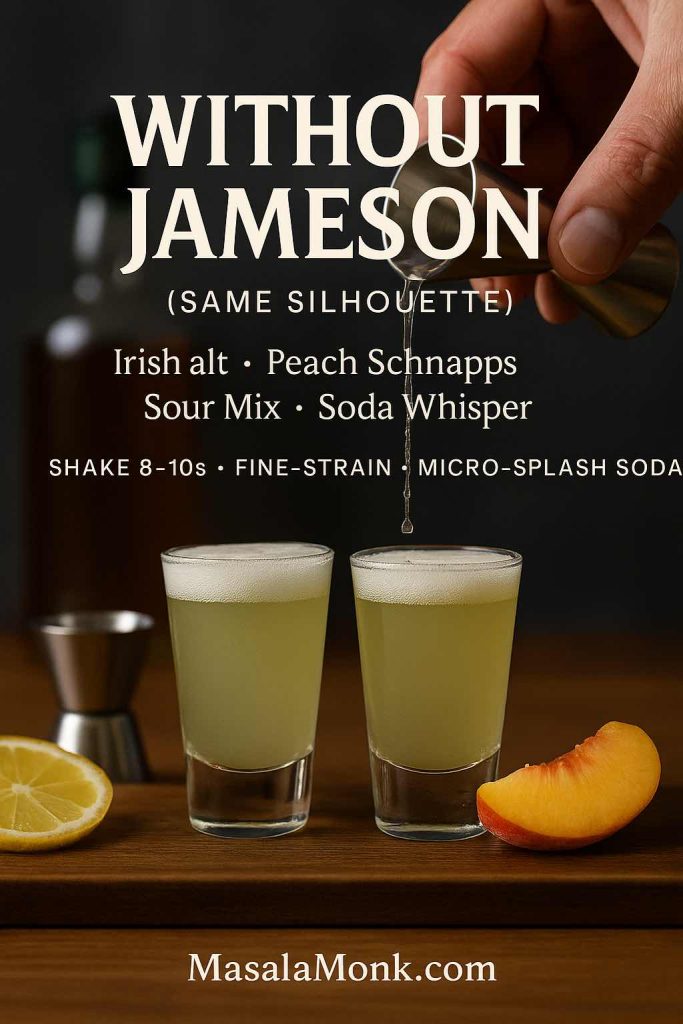
Method Classic shake; fine-strain; micro-splash.
Flavor & feel With other Irish whiskeys, nearly identical; bourbon adds vanilla-caramel; blended Scotch leans malty and drier.
Tweak If the alternate whiskey is sweeter, trim schnapps by a barspoon; if it’s drier, add a touch more sour. Thus you keep the silhouette intact.
Also Read: How to Make Churros (Authentic + Easy Recipe)
Iced Tea Shot (Arnold-Palmer-ish, Ultra-Sessionable)
You’ll need (2 shots)
- ½ oz (15 ml) Jameson
- ½ oz (15 ml) peach schnapps
- ½ oz (15 ml) sour mix
- ½–¾ oz (15–22 ml) chilled black tea (or unsweetened iced tea)

Method Shake everything except tea; fine-strain; spoon a light float of tea.
Flavor & feel Nearly still; true tea aroma; lightly tart finish.
Serve when Daytime hangs, BBQs, or whenever guests want less fizz.
Also Read: How to Cook Bacon in the Oven (Crispy, No-Mess, Crowd-Ready Recipe)
“Shot into a Drink” Template (Turn Any Riff into a Tall Pour)
You’ll need (1 tall drink)
- Spirit: 1½ oz (45 ml) (match your shot base)
- Peach schnapps: 1 oz (30 ml)
- Sour mix: 1 oz (30 ml)
- Top: 3–4 oz (90–120 ml) soda or iced tea
- Ice

Method Build spirit, schnapps, and sour over ice; top; give a single gentle stir.
Flavor & feel Your shot’s signature becomes an anytime highball. For carbonation-care and top-off tactics, borrow the light-handed approach from Coconut Water Cocktails and adapt it here.
“Green Tea Drop Shot” (Playful, Lightly Sparkling Recipe)
You’ll need (per person)
- In a shot: ½ oz (15 ml) Jameson, ½ oz (15 ml) peach schnapps, ¼ oz (7 ml) sour mix
- In a rocks glass: 3 oz (90 ml) chilled lemon-lime soda (or lightly sweetened green tea soda)

Method Build soda in the rocks glass; drop the shot; sip promptly.
Flavor & feel Instant foam lift; sweetness integrates on the fly; aroma pops.
When to pour Casual nights where a little spectacle energizes the room.
Also Read: French Toast Sticks (Air Fryer + Oven Recipe) — Crispy Outside, Custardy Inside
Arizona-Style & Kamoti-Style (Brand-Guided Tea Riffs)
Arizona-style Keep equal parts whiskey/schnapps/sour, then float Arizona Green Tea (or a favorite canned green tea) instead of soda. If the tea is sweet, trim the schnapps by a barspoon.

Kamoti-style Split the schnapps: ¼ oz (7 ml) peach schnapps + ¼ oz (7 ml) green tea liqueur, with ½ oz whiskey and ½ oz sour. Expect a real tea nose and a rounder, softer finish. If you’re drifting tea-first, comparing brand structures on Jameson’s site and ml-precise approaches on Difford’s Guide is illuminating.

Also Read: 10 Best Chicken Sandwich Recipes (BBQ, Parm, Buffalo & More)
Texture, temperature, and that tea-like color
A great pour starts well before you touch the shaker. Chill your glassware so the foam collar lingers. Use dense, fresh ice to encourage tiny bubbles instead of a watery slosh. Shake with intent—firm arcs, quick snap, short window. Then fine-strain to keep the surface smooth. The light green hue arrives from a little cocktail alchemy: bright sour mix and peach schnapps over pale whiskey produce a spring-tinted tone, and that small soda float scatters light across the top. If you want to see how professionals balance color and carbonation in tea-linked long drinks, compare your highball to Liquor.com’s Green Tea Highball; different composition, same idea—spirit, tea, sparkle, clarity.
Making more without losing quality of Green Tea Shot with Jameson
Batching streamlines service without sacrificing snap. Combine equal parts Jameson, peach schnapps, and sour mix in a chilled bottle or pitcher; omit soda. Keep the premix very cold. For each shot, measure 1½ oz (45 ml) premix into a shaker with fresh ice, shake fast, strain, and add the soda kiss right before serving. That last-second splash preserves the foam and the tea-like impression even when you’re working quickly.
If your guests pivot to tall drinks, pour 2½–3 oz (75–90 ml) premix over ice, top with soda or tea, and give a single gentle turn. Meanwhile, for a broader peach-centric spread—spritzes, long drinks, and tray items—MasalaMonk’s Crown Royal Peach twists slide in comfortably beside jello shots and highballs. Prefer tropical-light textures instead? The breezy structures in Coconut Water Cocktails demonstrate how to soften acidity without losing refreshment—useful when you want a slower sip that still feels bright.
For more party-friendly ideas that retain zip in big batches, MasalaMonk’s mango vodka long-drink ratios offer a clear template for lengthening sweetness without turning flabby.
Choosing bottles and dialing sweetness
Which Irish whiskey? For the classic green tea shot with Jameson, you already know the pick. If the bar is stocked with an alternate Irish, don’t stress—this is a forgiving build. The goal is smooth, cereal-forward, and moderately light oak.
Which peach schnapps? You’re usually choosing between exuberantly sweet, candy-like brands and slightly cleaner, less viscous options. If your schnapps is extra sugary, shave a barspoon off and replace it with whiskey, or give your sour mix a touch more lemon to tighten the edges.
When to sweeten or sharpen? If a guest says “too tart,” drizzle a quarter-teaspoon more schnapps into the shaker; if they say “too sweet,” tip in a squeeze of lemon or a barspoon of your sour mix without syrup (equal lemon-lime, no sugar). The balancing mindset from the Lemon Drop Martini tutorial translates directly here: small nudges beat big swings.
Glass & ice details. Chilled shot glasses extend foam; dense cubes reduce melt. Even chilling your jigger and tin before a party softens thermal shock and speeds your rhythm.
Also Read: Punch with Pineapple Juice: Guide & 9 Party-Perfect Recipes
Serve with intention
Shots don’t have to be chaotic. Arrange chilled shot glasses on a tray, line them up, and pour in sequence for a tidy presentation. If you’re switching back and forth between shots and highballs, keep a separate scoop and glass of fresh ice just for shaking. Meanwhile, consider a simple garnish for the tall version—a lemon wheel or a thin strip of orange zest—so guests can smell citrus before the first sip. If you want a more aromatic, spice-curious table theme, MasalaMonk’s tea-cocktail series—like star anise iced tea cocktails and paprika-kissed iced tea ideas—shows how minimal garnishes shift the whole vibe.
When you actually want green tea in the glass
At some point, someone will ask, “Where’s the tea?” If you’re in the mood to answer with a proper tea-forward cocktail, you have options. Whisky plus chilled green tea makes a poised, adult highball when you favor balance over sweetness—see Liquor.com’s Green Tea Highball for a clear blueprint. Or, if you want a Jameson-branded recipe that features brewed tea as an ingredient, the Jameson Green Tea & Ginger Sour is brisk, gingery, and genuinely tea-aromatic. In both cases, you’re leaving the “shot” universe and entering a calm, sippable frame.
Also Read: Macaroni & Cheese Recipe: Creamy Stovetop, Baked & Southern
A smoother path to consistency
Even uncomplicated drinks benefit from a touch of craft. Use a jigger. Choose fresh citrus. Shake decisively, then strain immediately. Keep your sour mix cold. Cycle your ice so it’s crisp and not half-melted. These aren’t fussy rules; they’re the small habits that make the second round taste exactly like the first.
If you want to drill technique in a forgiving context, practice with classic three-ingredient templates. The evergreen Daiquiri primer teaches compact shaking and lime-sugar balance, while the Lemon Drop Martini walkthrough reinforces how a bright sour frame can feel plush, not sharp. Bring those instincts back to your shaker, and the green tea shot with Jameson will pour clean without you thinking twice.
Flavor notes to expect, sip by sip
First comes a cheerful peach aroma that hints at candy but doesn’t clobber. Then a lemon-lime lift; not soda-pop sweet, just sparkling. On the palate, the whiskey keeps everything grounded—grainy warmth, a little vanilla, and a finish that reads like sweet tea without actual leaves. Served icy, the texture is soft and quick. As the shot warms, the peach becomes more perfumed, so either serve promptly or lean into the highball version for a lingering drink.
For a contrasting, true-tea experience with a similar flavor family, try a chilled peach-black-tea highball or an Earl Grey spritz; MasalaMonk’s Earl Grey & Gin fizz shows how a modest line of lemon and bubbles reframes familiar aromatics in a longer pour.
If you love Green Tea Shot with Jameson, you’ll love these too
Once your crew warms to peach-citrus energy, adjacent pours make natural next steps. A peach-forward spritz keeps fruit emphatic while lightening the body—Crown Royal Peach twists offer clever spice bridges like cardamom and ginger. Prefer cooler, breezier textures? The tall templates in Coconut Water Cocktails soften acidity but preserve zip. Meanwhile, if the room splits between shot folks and coupe folks, slide into a bright, citrus-forward classic like the Lemon Drop Martini and circle back to shots when the playlist climbs. If you want a forgiving arena to practice repeatable shaking, the Daiquiri primer remains a masterclass in balance—skills you’ll feel immediately when you shake your next round of green tea shots.
The bottom line
Lean builds are often the most resilient. The green tea shot with Jameson thrives because it gives you just enough sweetness to be friendly, just enough citrus to stay clean, and just enough whiskey to feel like a real drink. Shake it cold, top it with restraint, and let the peachy-citrus perfume do the rest. When you’re ready to branch out, you can pivot to a long, soda-topped highball, a brewed-tea peach shot, or a true tea cocktail—all without abandoning the easygoing charm that made this little green-gold pour famous in the first place.
For deeper recipe cross-checks and ideas to keep the momentum going, browse Liquor.com’s recipe, the tidy ml measures at Difford’s Guide, and the brand spec on Jameson’s site. Then circle back to MasalaMonk’s technique vault—Daiquiri, Lemon Drop Martini, Vodka with Lemon, and Coconut Water Cocktails—so your next round tastes even better than the first.
FAQs about Green Tea Shot with Jameson
1) What is a green tea shot with Jameson?
A green tea shot with Jameson is an equal-parts mini-cocktail made with Jameson Irish Whiskey, peach schnapps, and sour mix, finished with a tiny splash of lemon-lime soda. Crucially, it contains no actual tea; the name comes from the light green hue and sweet-tea vibe.
2) What are the ingredients in a green tea shot?
Standard ingredients: ½ oz (15 ml) Jameson, ½ oz (15 ml) peach schnapps, ½ oz (15 ml) sour mix, plus a restrained soda splash. Optionally, you can use fresh lemon-lime sour instead of bottled for brighter flavor.
3) How do you make a green tea shot with Jameson step-by-step?
Add Jameson, peach schnapps, and sour mix to an ice-filled shaker; shake hard for 8–10 seconds; fine-strain into two chilled shot glasses; finally, add a whisper of lemon-lime soda and serve immediately.
4) Does a green tea shot actually include tea?
Surprisingly, no. Despite the name, the classic recipe has zero tea. The “tea” impression comes from peach-citrus sweetness, pale color, and a delicate fizz.
5) What’s the best ratio for green tea shots?
As a rule, use equal parts (1:1:1): ½ oz Jameson + ½ oz peach schnapps + ½ oz sour mix per shot, then a micro-splash of soda for lift.
6) Can I make a green tea shot without Jameson?
Yes. Pragmatically, any smooth Irish whiskey works; comparatively, bourbon will taste sweeter/vanilla-leaning, while blended Scotch will land drier and malty. Keep the equal-parts formula and adjust sweetness by barspoons if needed.
7) What is a white tea shot vs. a green tea shot?
A white tea shot swaps the whiskey for vodka (½ oz vodka, ½ oz peach schnapps, ½ oz sour mix, soda whisper). It’s lighter and crisper, though the rest of the build is identical.
8) Can I make a green tea shot with tequila instead of whiskey?
Absolutely. Use ½ oz blanco tequila, ½ oz peach schnapps, ½ oz sour mix, and a tiny soda splash. Consequently, you’ll get herbal, lightly peppery notes with the same peach-citrus silhouette.
9) How do I make a Jameson Orange tea shot?
Substitute Jameson Orange for classic Jameson; otherwise, keep equal parts and the same method. Notably, you may trim schnapps slightly if sweetness blooms, or bump sour mix by a barspoon for extra snap.
10) What’s the “Arizona green tea shot” everyone mentions?
It’s a social riff where, instead of soda, you float a spoonful of canned Arizona Green Tea (or similar). Because many canned teas are sweet, you might reduce the schnapps a touch to maintain balance.
11) What is a Kamoti green tea shot?
That version uses a green-tea liqueur alongside (or in place of some) peach schnapps. For example: ½ oz Jameson, ¼ oz peach schnapps, ¼ oz green-tea liqueur, ½ oz sour; then a small soda topper for lift.
12) Can I turn the green tea shot into a full drink?
Yes—easily. Build in a tall glass: 1½ oz Jameson, 1 oz peach schnapps, 1 oz sour mix; top with 3–4 oz soda and give one gentle turn. Consequently, you get the same flavor in a refreshing highball.
13) What’s the best sour mix for green tea shots?
Ideally, fresh 1:1 simple syrup with equal parts lemon and lime juice (kept cold) tastes brightest. Nevertheless, bottled sour works for speed; if it seems flat, squeeze in a bit of fresh lemon at the shaker.
14) What does a green tea shot taste like?
Expect a peachy nose, bright lemon-lime mid-palate, soft grain from the whiskey, and a lightly sparkling finish that reads like sweet tea—albeit without any brewed leaves.
15) What’s the ABV and how strong is it?
Because it’s split three ways and lightly diluted in the shake (plus a soda kiss), one green tea shot with Jameson drinks softer than neat whiskey. Even so, it’s still alcohol—pace yourself accordingly.
16) How do I batch green tea shots for a party?
Subsequently, combine equal parts Jameson, peach schnapps, and sour mix in a chilled bottle; do not add soda. Shake each round with fresh ice to order, strain into shots, then add the soda whisper just before serving.
17) Can I make green tea jello shots with the same flavor?
Indeed. Dissolve lemon-lime gelatin in boiling water, then stir in measured Jameson, peach schnapps, and sour mix. Portion into mini cups and chill. The resulting set keeps the peach-citrus profile with a gentle whiskey warmth.
18) How long does homemade sour mix last in the fridge?
Typically, up to 7 days in a clean bottle, refrigerated. Moreover, shaking the bottle before service re-emulsifies citrus oils and restores brightness.
19) What’s the difference between “green tea shot drink,” “as a drink,” and “full drink”?
These phrases all refer to lengthening the shot into a highball (tall, over ice) using soda or iced tea. Conversely, the shot itself is a small, shaken, quickly served portion.
20) Can I use brewed tea in a green tea shot?
Yes—just choose the peach tea shot variation: replace the soda with strong, chilled black tea and optionally add a dash of fresh lemon. Consequently, the result turns more amber and finishes drier.
21) How do I order or describe it in Spanish?
Try: “Green Tea Shot con Jameson: 15 ml whiskey irlandés, 15 ml licor de durazno, 15 ml sour; un chorrito de gaseosa lima-limón. Agitar con hielo y colar.”
22) What’s in a green tea shot with Jameson Orange vs. classic Jameson?
Both share peach schnapps, sour mix, and soda; however, Jameson Orange adds zesty citrus aromatics and can taste slightly sweeter. Accordingly, you may reduce schnapps or raise the sour by a barspoon.
23) Can I make a green tea shot without peach schnapps?
You can, but flavor shifts. Likewise, consider splitting peach schnapps with green-tea liqueur or apricot liqueur; alternatively, add a barspoon of simple syrup and extra lemon to simulate peachy sweetness.
24) Is there a martini version of the green tea shot with Jameson?
Yes: shake 1½ oz Jameson, ¾ oz peach schnapps, ¾ oz sour mix; fine-strain into a chilled coupe. Consequently, you get a colder, silkier, slower-sipping profile with the same core flavors.
25) What if my green tea shot is too sweet—or too tart?
If too sweet, add a small squeeze of lemon or reduce schnapps by a barspoon. If too tart, increase schnapps slightly or add a tiny dash of simple syrup. Importantly, make micro-adjustments for repeatability.
26) Can I make a green tea shot with vodka and still call it “green tea shot”?
Commonly, yes (some menus do). Nevertheless, it’s more accurate to call it a white tea shot (vodka + peach schnapps + sour + soda whisper) to signal the lighter spirit.
27) What’s the “drop shot” version?
Place the mixed shot (Jameson + peach schnapps + sour) above a rocks glass of lemon-lime soda; drop the shot into the glass and drink promptly. Thus, you get instant foam and a lively aroma pop.
28) How do I keep the foam collar on top?
Use very cold glassware, dense ice, and a firm 8–10-second shake, then fine-strain and add only a micro-splash of soda. Consequently, the tiny bubbles linger instead of collapsing.
29) Can I make a “green tea shot with Jameson” gluten-free?
Jameson is commonly considered gluten-free by many due to distillation; however, sensitivities vary. Therefore, if in doubt, consult your dietary guidelines and choose certified products where necessary.
30) What’s the simplest two-ingredient whiskey and peach schnapps shot?
Stir or briefly shake ¾ oz Jameson with ¾ oz peach schnapps over ice and strain. Naturally, it’s sweeter and warmer than the classic (no citrus, no soda), but it’s fast and friendly.
31) What’s the ideal garnish?
For the tall “full drink,” a thin lemon wheel or a whisper of orange zest enhances aroma. By contrast, the shot itself generally needs none; restraint keeps the texture crisp and the look clean.
32) What’s the calorie range for a green tea shot with Jameson?
Estimates vary by brand, yet roughly 80–110 kcal per shot is typical once you account for schnapps, sour, and the small soda splash. Consequently, longer highballs add calories primarily via the top-off.
33) Should I use store-bought sour mix or fresh?
Fresh tastes brighter, smells cleaner, and foams better. That said, store-bought is convenient and consistent; accordingly, sharpen it with a quick squeeze of lemon if it seems dull.
34) Can I prep the shots ahead of time?
Mix the whiskey, schnapps, and sour in a chilled bottle; keep it cold. Subsequently, shake individual rounds with fresh ice and add the soda whisper right before serving to preserve texture.
35) Why does mine not look “green” enough?
Color depends on your sour and schnapps hue. For slightly greener tone, ensure the sour is fresh (lemon + lime) and don’t over-dilute with soda; the spring-green tint should appear after a vigorous shake.



